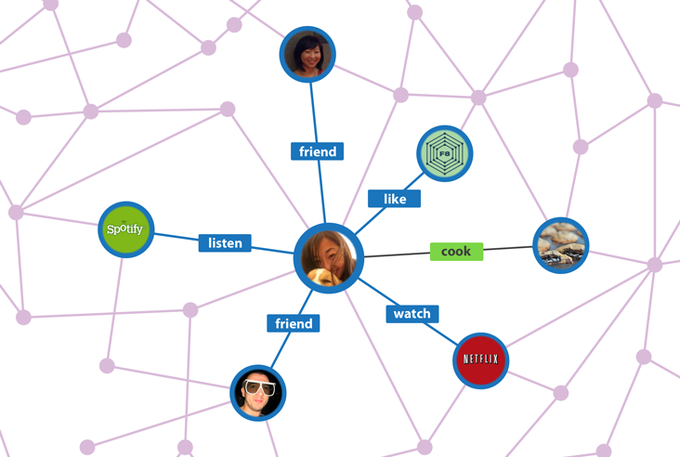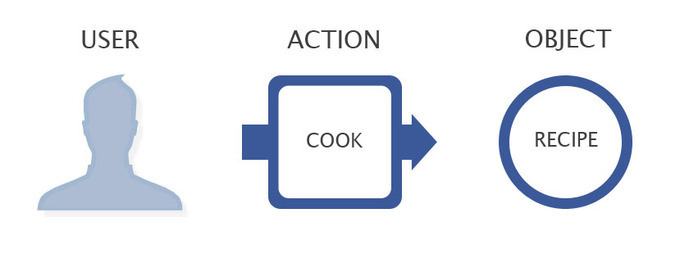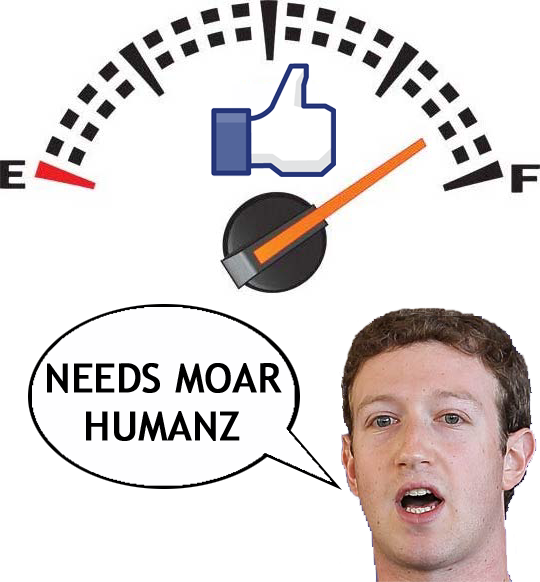Open Graph is cool, but not ready for primetime
Lucas Meadows stashed this in Facebook

Source: Open Graph - Facebook Developers
Stashed in: Interest Graph!, Facebook!, Code, Zuck!, Awesome, One does not simply..., Kardashian, Facebook, Interest Graph, Sticking it to The Man!, APIs, @lmeadows
Semantic Web. Web 3.0. The wave of the future.
But the future isn't here just yet.
Though Open Graph (OG) is very promising (and more than a little scary), it seems to me that it's still very much in beta. But I give Facebook credit for failing forward.
The main problems I have with it are:
- Though OG appears to be very powerful, the existing documentation is sufficient only for the most trivial apps.
- It's possible to permanently, irrevocably break your app's OG integration.
- It's impossible to migrate data safely if you decide to re-structure your object schema.
- Though video integration is strong, there are too many restrictive rules around having top-notch image integration. In fact, you basically have to be Instragram™ to get it.
OK, So What Exactly Is Open Graph?
Those familiar with the notion of semantic web will recognize this:

So semantic web is all about structuring your data in a way that mimics sentences in natural languages.
OG is Facebook's take on semantic web.
- Users are Facebook identities. They are people who may use your app through FB.
- Objects are the pages of your app. For example, you may have a "Music Collection" object type, and the definition of a given collection is the page where it can be found. You can use FB's default data types, or define your own.
- Actions are the things that Users can do to or with your Objects
Whereas Facebook's previous APIs allowed you to define the entire story in an API call, with OG you simply pass the url of the page on which the user did something, the identity of the user, and the action that was taken, and Facebook will suck in the rest of the data it needs from the OG declarations you made in the head of the html document of that page (e.g. User "Lucas" Action "read" Object "a story about Kim Kardashian's butt").
How We Tried To Use Open Graph At PandaWhale
Since the technology is so young, there is very little expertise in the dev community about how to use OG in advanced ways. So there's a learning process. And that's fine, but the problem is that it's not always clear how best to organize your object definitions a priori. For example, for v1 of our OG integration at PandaWhale, I defined the following objects:
- Photos. These are meant to be the photos/images that people stash with our bookmarklet.
- Videos. YouTube and Vimeo vids our users stash. This is a "primitive" Facebook Open Graph data type (
og:video). - Articles. Another FB data type (
og:article). It is commonly used by social readers, and I intended it to be for convos that are neither stashed videos nor stashed images.
So I also defined a commenting and posting Actions (pandawhale:comment_on and pandawhale:post), both of which can act on any of our 3 object types ("Lucas posted a video", "Lucas commented on an article", etc.). The integration seemed to work great, especially for videos, which produce attractive share stories that let videos be played in-context on Facebook.
At that point there were only a handful of apps whose OG integration might be said to be better than ours -- Pinterest and Instagram come to mind -- but it's a big pond, and those are some big fish.
We wanted to take our OG integration "to the next level," so we decided to experiment with recreating our convo stash structure on Facebook. We wanted to give users new ways to aggregate and sort their stories, which also happens to be one of the main capabilities Facebook is using to sell people on OG. It wasn't clear in the beginning, but Custom Object Properties are the key to doing these advanced tricks.
But og: object types are immutable, meaning you cannot add custom properties to them. This means that if you use the og:video type to get those slick video shares right off the bat, you'll have to destroy your old video stories when you migrate to a custom object type which defines a video as a property (is it supposed to be obvious that you should do that?). Ditto for og:article, or any other OG "native" type.
I would be OK with that, but you have to destroy those old stories in order to move forward. Even worse, you cannot change the object type associated with a given url after the first time it gets sucked in and categorized by Facebook, even if you change the OG metadata in the head of the document. FB's "caching" appears to be permanent in this respect. This could cause problems as serious as all users who signed up before a certain date NEVER having access to certain OG functionality that your new users get.
Furthermore, if you remove ALL of your object definitions and start over from a clean slate, it appears that the FB app filter becomes permanently broken for that app. Thankfully, I only did this to a development app. It would be a disaster in production to have to change the FB side of your app (and therefore the OAuth keys).

Lessons Learned About Integrating With Open Graph
- NEVER use default OG data types like
og:videoandog:articleas top-level objects in your app. If you want to have video, define some other object type and give it anog:videoproperty. - Remember that you can make custom properties that are of custom object types. For example, we have a
pandawhale:stash(collection of convos) object type and apandawhale:stasher(person who collects) type. Thepandawhale:stashrepresents a stash on PandaWhale, whereas a stasher is a person. I defined a custom propertypandawhale:stash:ownerwhich I declared as typepandawhale:stasher, which is pretty awesome. - Try to think through what types of collections and stories you're likely to want early on, and design your object schema accordingly. It's definitely not trivial to make basic schema changes later. Facebook may make better migration tools down the road, but for now you risk serious data loss as a result of re-defining your object schema. Remember, you want to ADD new objects and properties as you grow, not REMOVE them as removing object types causes loss of data.
- Consider making every publicly-available page an OG object. If people can visit and interact with the page, why not embed the OG metadata and define an OG object in your app settings? Even if you aren't generating stories based on these pages yet, it still allows you more control over what FB shares of that page will look like since Facebook parses this metadata each time someone attempts to share one of your urls.
EDIT: June 6, 2012
The "irrevocable" breakage I experienced with my development app appears to be fixed now, apparently as a result of deauthorizing and then reauthorizing the app. So it seems to not be truly permanent, but you should still be careful with your app settings as you don't want to ask each user to remove and re-add your app.
One does not simply implement Open Graph applications.
Great writeup, Lucas.
I don't think of Open Graph as an evolution of Semantic Web.
I think of Open Graph as Facebook's implementation of the Interest Graph.
I also think that although Open Graph is Facebook's future, there's a rough road ahead to getting people -- specifically, developers -- to understand what's possible and what's desirable in our implementations of apps that use Open Graph.
In the meantime, there is suffering because of bugs and lack of documentation.
Especially documentation of best practices with examples.
Not to argue, um, semantics too much, but:
- Users are already carrying their Facebook identity with them practically everywhere they go on the web
- Facebook is well on the way to getting every major site on the web to embed FB-specific metadata into their apps which defines every single view as a Facebook object type
- These FB-specific objects have FB-specific actions that these FB identities (subjects) may take upon them
So even though I'd agree that Zuckerberg didn't launch OG for the sake of making the web semantic, it does seem to me that, practically speaking, we're headed for an internet that fits the definition of "semantic web" pretty closely.
Whereas sites used to embed metadata in their pages to assist crawlers in structuring a search index, people are spending more and more of their time on doing this for FB. We're all contributing to a web that's crawled by FB, where we register our sites on facebook.com and spoon feed them structured RDF-y data about our site in the same way that users spoon feed FB information about themselves in the form of Likes and profile data: because they make it worth our while.
I personally think that Open Graph is to RDF as FB Connect is to OAuth 1.0a.
Meaning, both were emerging standards of unclear significance, but which Facebook took out of obscurity by doing their own version of it, and successfully using it in their quest to swallow as much of the web as possible.
Zuck's one and only goal is to make FB as big as he can. He tried doing it with Social Graph and got pretty far. You seem to think (and I agree with you) that his next big move is Interest Graph.
But if it walks like a duck and quacks like a duck, I say it's probably a duck :)
I think that's a logical assessment.
But I also think Facebook didn't start by asking itself, Can we layer Semantic Web on top of Facebook?
I think Facebook started by asking itself, How can we own the Interest Graph?
And everything came out of that, including use of triples and other semantic-webby things.
Agreed.
Zuck isn't really principled enough to care about things like evolving the web for the web's sake.
He just wants to move that needle!











2:26 PM Jun 14 2012